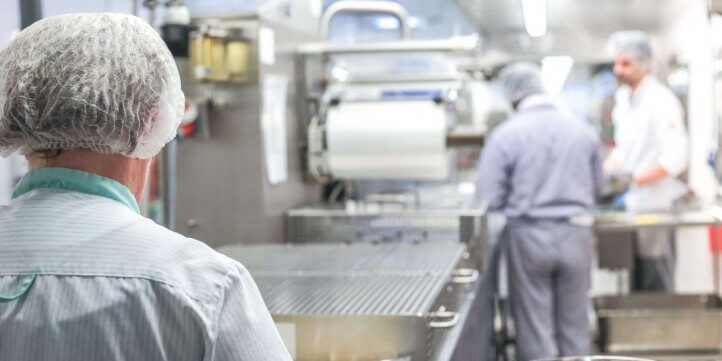Industry in Focus: Food Manufacturing

The Food and Drink Federation (FDF) confirms that food and drink remains the UK’s largest manufacturing industry, making up 17% of all manufacturing activity that takes place across the country. The sector contributes more than £30 billion to the economy, and is growing rapidly. But the food manufacturing industry of today looks significantly different from the state of food manufacturing just a few years ago, with notable changes taking place to adapt to current demand. So just what is happening today?
Let’s take a look…
Sustainability
Sustainability is one of the biggest priorities in the food manufacturing world today. It’s reported that consumers are willing to pay more for sustainable brands, which has facilitated a growing need from retailers for plant-based products. The global plant-based food market is estimated to be worth $4.5 billion, according to the Good Food Institute. And it’s not just plant-based foods that are on the rise. ‘Functional’ foods — healthier products which benefit the body — are expected to see an 8% CAGR between 2017 – 2021. Food manufacturing is changing to accommodate evolving trends, with 14.3 billion less teaspoons of sugar used in manufacturing than in 2015, according to the Technavio Global Functional Foods and Beverages Market report.
And the focus on sustainability doesn’t end with ingredients. Many manufacturers are today looking into ways to create more sustainable processes and procedures within the workplace. One of the biggest changes that’s being seen is a growing demand for sustainable workwear, made from strong and durable materials that are able to withstand frequent washing cycles to elongate the lifespan of the clothing.
Recruitment
Nearly 400,000 people are employed in the UK food manufacturing industry, but experts claim that this isn’t enough, particularly if the sector is to continue growing and continue becoming more innovative. This means that recruitment is an urgent priority for many businesses at the moment. The FDF reports that, ideally, the industry needs an additional 140,000 employees in order to maintain the levels of growth already seen.
There are a number of reasons why recruitment is forming a challenge for food manufacturers today. Firstly we must touch upon Brexit. More than one quarter of employees in the UK food manufacturing industry are from the European Union, and with skilled workers deterred from seeking employment in the UK due to previous uncertainties, the talent pool has been significantly narrowed. But we must also consider the constantly changing needs of the sector and demand for new skills, and the aging workforce (10.5% of food and drink workers are expected to retire within the next decade). Reports suggest that research and development positions, engineering roles, and technical/quality vacancies will be amongst some of the trickiest to fill.
Automation
Due to the strict manufacturing and control regulations that are in place in the food manufacturing industry, adoption of automation has been slower across this sector than it has in other types of business. However, that is beginning to change, and we can see this in the fact that the food processing machinery market is growing. Throughout the 2018 – 2022 period, this industry is expected to see a CAGR of almost 6%. As a result of the rising cost of raw ingredients, and demand for faster production times, organisations are beginning to invest more in machinery and equipment and boost automation.
Some of the most commonly integrated automation tools in the food manufacturing industry today are 3D vision systems and selective compliant articulated robot arm machines. Tools such as these can bring a number of benefits, including improved worker safety, better efficiency, improved quality control, and complete end-to-end traceability. In 2017, 73% of food manufacturers were using automation, according to the Food and Drink Industry Economic Contribution and Growth Opportunities report.
-
Posted in
Industry in Focus





